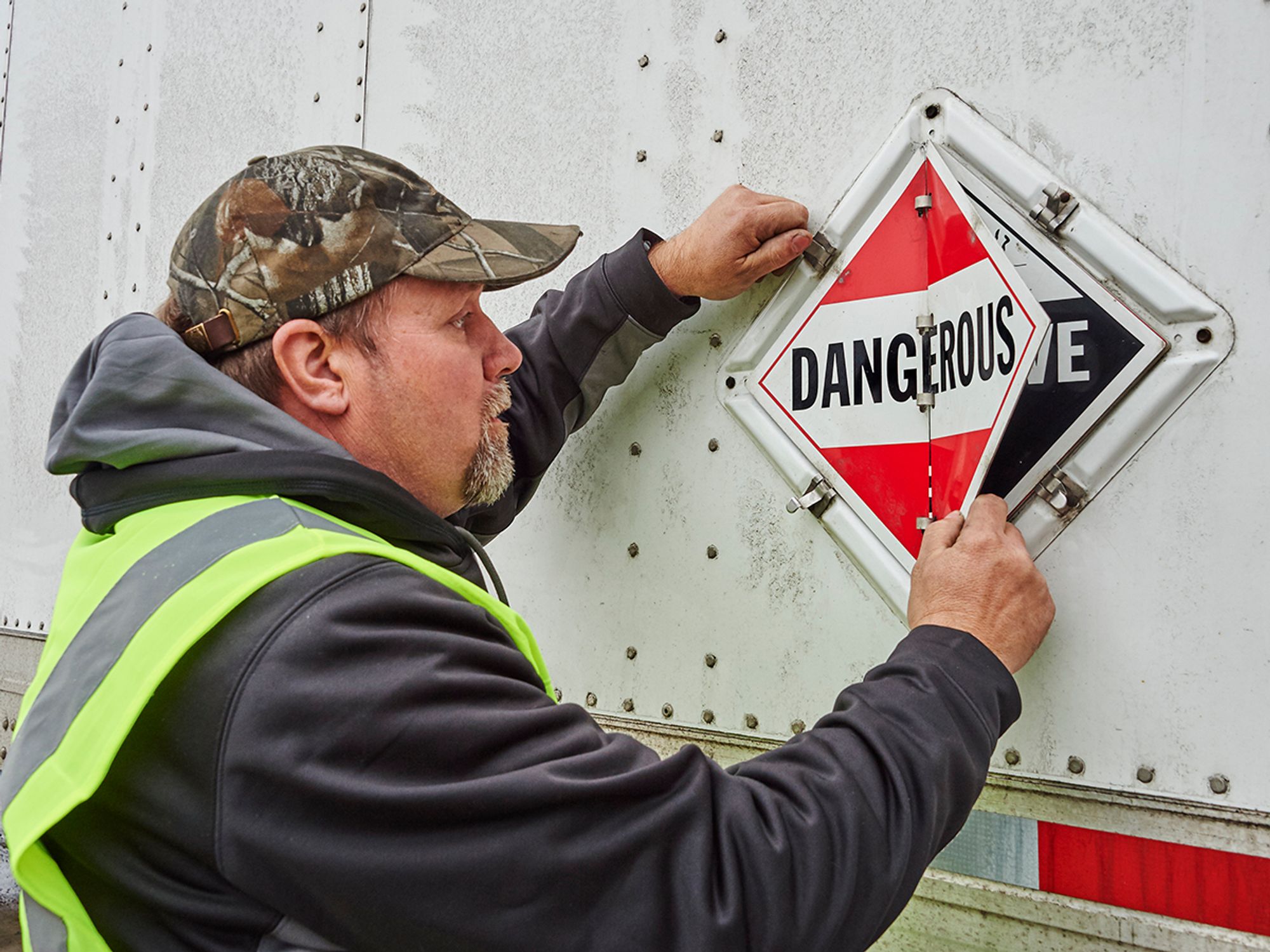Placards

- Most vehicles that transport hazardous materials will need to carry the appropriate placards.
The hazardous materials regulations (HMR) require most vehicles transporting hazardous goods to be placarded. The shipper is responsible for providing the appropriate placards to the motor carrier for a shipment. The carrier is responsible for applying them correctly to the vehicle and maintaining them during transport. In addition, carriers are responsible for any placarding necessitated by aggregate shipments that collect at their terminals. Large freight containers (640 cubic feet or more) must be placarded by the shipper.
Placards must be affixed on all four sides of the vehicle, trailer, or cargo carrier. The front placard may be on the front of the tractor or the cargo body. Placards must be removed from any vehicle not carrying hazardous materials.
